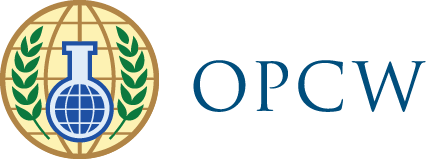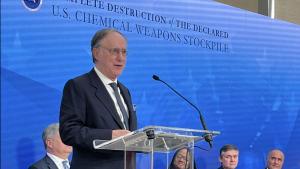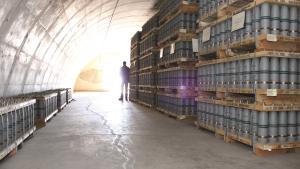The world has agreed that chemical weapons have no place in today’s arsenals. The OPCW, together with its Member States, are committed to the complete elimination of chemical weapons stockpiles under the watchful eye of the OPCW’s verification regime.
Declarations
As a primary step toward meeting destruction obligations, the Convention requires States Parties to submit declarations on their existing chemical weapons, chemicals, materials, equipment, and facilities that could be used to produce such weapons. These declarations provide baseline data to the OPCW for planning inspections and for verifying destruction.
Declaration Timelines
Each State Party is required to submit chemical weapons related declarations to the OPCW no later than 30 days after the Convention enters into force for that State Party.
Chemical weapons related declarations include information on chemical weapons, old and abandoned chemical weapons, chemicals weapons production facilities, chemical weapons research and development facilities or establishments, and riot control agents.
A general destruction plan must also be submitted, including a schedule compatible with the destruction time frames stipulated by the Convention and by the Executive Council Decisions, a list of the types and quantities of chemical weapons to be destroyed at each chemical weapons destruction facility (CWDF), cost estimates, methods of destruction, and any issues that could adversely impact on the national destruction programme. Details about the required information as well as what is needed for submitting destruction plans and reports are specified in Parts IV and V of the Verification Annex.
Any discovery of chemical weapons after the submission of initial declaration shall be reported per Article IV.
All chemical weapons related declarations are submitted to the OPCW’s Declarations Branch for processing, evaluation, and validation. Declarations can be submitted by Member States electronically through the Secure Information Exchange (SIX) system or through their Permanent Representations to the OPCW by e-form or hard copy.
Destruction
A State Party can select and implement the appropriate destruction technologies for its chemical weapons by which chemicals are converted in an essentially irreversible way to a form unsuitable for production of chemical weapons and which – in an irreversible manner – renders munitions and other devices unusable as such. A chemical agent, for example, can be neutralised or incinerated, while unfilled munitions and other devices can simply be cut apart.
The Convention also requires States Parties to assign the highest priority to ensuring the safety of people and to protecting the environment during the implementation of its obligation. The methods employed must comply with national and international safety and emissions regulations, and cannot include open-pit burning, land burial, or dumping in any body of water.
Destruction Technologies
Chemical weapons destruction technologies have been developed to destroy assembled unitary chemical weapons (e.g., artillery projectiles, mortars, air bombs, rockets, rocket warheads, spray tanks), bulk chemical weapons agents, binary munitions and recovered chemical weapons munitions.
These technologies can be divided in two main groups:
- high temperature destruction technologies like plasma pyrolysis, incineration and explosion chambers, with the associated off-gas treatment system;
- low-temperature destruction technologies like neutralisation (i.e., using neutralising agents or a decontamination solution such as monoethanolamine, RD-4M or aqueous NaOH) and hydrolysis followed by secondary treatments of the resulting by-products (i.e., effluent, reaction mass or hydrolysate) like bituminisation (encapsulation), biodegratadtion or supercritical water oxidation, prior to final disposal in accordance to national regulatory provisions.
Post-treatment of the generated reaction masses that contain Schedule 2b chemicals is also required and done either by incineration, bio-treatment, or supercritical water oxidation.
Verifying Destruction
Providing confidence in destruction results
All destruction activities undertaken by Member States are required to occur under the watchful eye of the OPCW. The goal of verification activities is to confirm the complete destruction of chemical weapons, to provide confidence to States Parties regarding the integrity of the destruction process and the facility as a whole, and to ensure the non-diversion of chemical weapons.
The Technical Secretariat employs a diverse group of chemical demilitarisation inspection experts who have unimpeded access to all parts of the chemical weapons storage facilities and chemical weapons destruction facilities. These experts are responsible for inventorying the remaining stockpiles and monitoring and verifying the completion of destruction operations – in accordance with facility agreements and agreed plans for verifications.
Until the end point of destruction, demilitarisation operations are continually monitored by OPCW inspectors. Inspectors provide a continuous physical presence at the destruction facility and monitor activities with on-site instruments such as closed-circuit television, process advisory screens. Inspectors also review documentation and records they deem relevant to the conduct of their inspection.
Once completed, the State Party certifies, no later than 30 days after the destruction process has been completed, that all chemical weapons declared have been destroyed. In return, the Technical Secretariat confirms the State Parties declaration – reporting the completion of destruction of the designated quantity of chemical weapons.
Old Chemical Weapons
Old chemical weapons (OCW) must meet specific criteria concerning their date of manufacture and physical condition before they are verified as meeting the definition of an old chemical weapon. As with stockpiled chemical weapons in highly secured and safely protected storage, this includes projectiles, rockets, mortars, bombs, mines/spray dispersal devices, and spray tanks. The variety of chemical fills is much greater with chemical weapons manufactured prior to 1946, and includes fills such as mustard, phosgene, tabun, hydrogen cyanide, diphenylchlorarsine, chlorine, or stannic chloride.
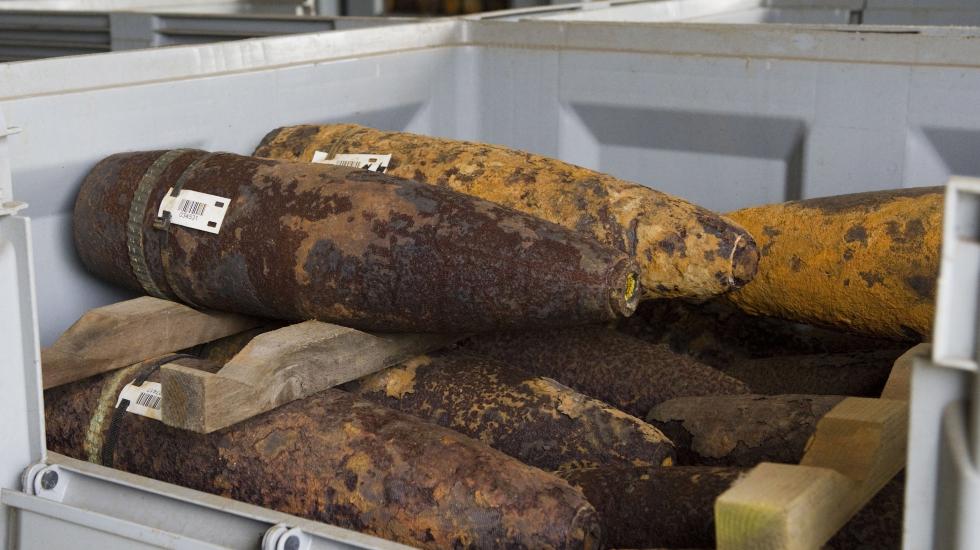
Old Chemical Weapons
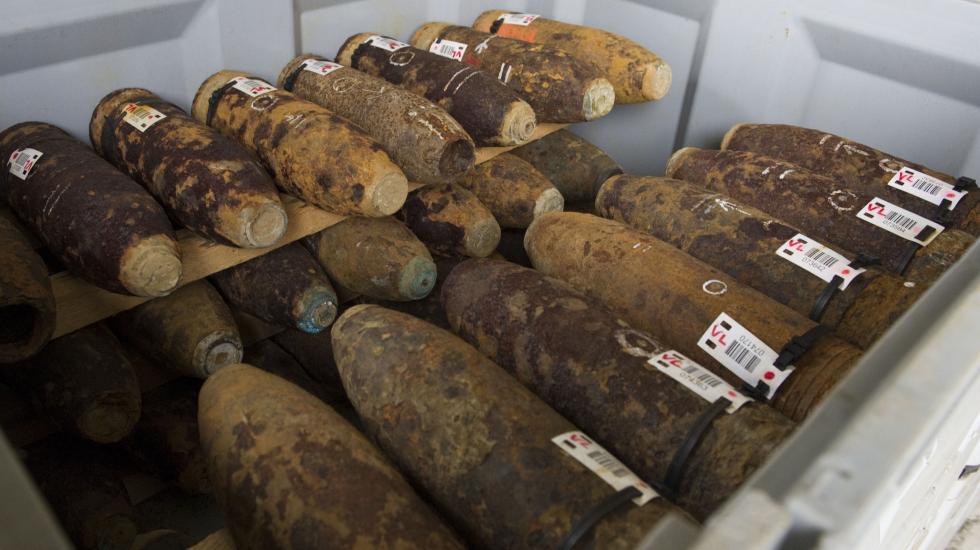
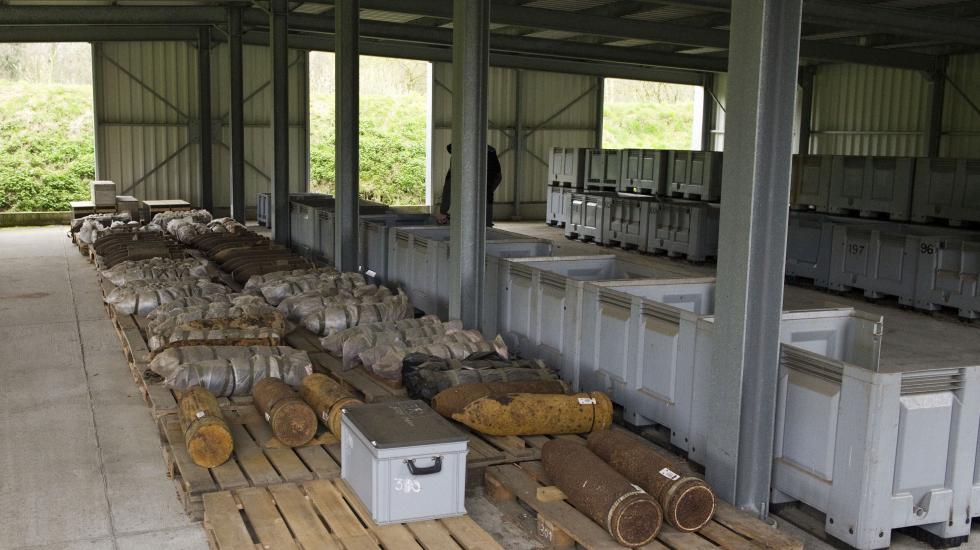
Abandoned Chemical Weapons
Abandoned chemical weapons (ACW) are chemical weapons abandoned by a State after 1 January 1925 on the territory of another State without the consent of the latter. Once declared, the origin of the ACW will be verified and evidence concerning the abandonment and the identity of the Abandoning State will be established. The Abandoning State Party is responsible for providing all resources for the destruction of these items, while the Territorial State Party must provide appropriate cooperation.
Recovery and destruction of old and abandoned chemical weapons present particular difficulties for Member States because chemical weapons are frequently mixed with other types of hazardous munitions. Deterioration of explosive and safety components makes approach and contact with these items highly dangerous.
Protection of human health and preservation of the environment is one of the primary obligations for all States Parties. According to the Convention, States Parties have to maintain the highest standards where the safety of the public and the protection of the environment are concerned during chemical weapons transportation, sampling and storage as well as during destruction operations.
Concerns
- The possible contamination of land and water due to the deterioration of chemical weapons that have been dumped at sea prior to 1985 or buried prior to 1977. Although the Convention does not apply to such munitions (Article IV, paragraph 17), this environmental concern may require the recovery and disposal of such obsolete munitions.
- The degradation and ageing of stockpiled chemical agents and munitions in storage for over half a century. Handling and transporting munitions and containers from the storage area to the destruction facility has to be conducted in compliance with the strictest safety measures to prevent any accidental release of chemical agents.
- There are also inherent risks associated with normal destruction operations, however, in most cases, they are substantially reduced by physical control safeguards (appropriate design and equipment) within the destruction facilities. There is a growing public concern on this issue regarding both the risk involved in direct exposure, as well as the long term low level exposure to agents, disposal, and degradation products.
Environmental Standards
The procedure followed to fulfil these obligations must comply with national safety and environmental standards. These national standards are declared as part of the general plan for destruction that is submitted to the OPCW Technical Secretariat by possessor states.
In addition, States Parties are required to obtain the necessary environmental permits for each chemical weapons destruction facility prior to the facility’s operations commencing. The verification measures of the Organisation will not aim at evaluating national standards or monitoring compliance with national standards. Monitoring compliance remains the responsibility of the State Party. However, the declaration of national standards is expected to contribute to the implementation of the obligation of the States Parties to safeguard the neighbouring population, the inspection personnel, and the environment during any operations involving chemical weapons.
Destruction Methods
Each State Party can determine how to destroy its chemical weapons, however, destruction methods with a high ecological impact like sea dumping, land burial, and open-pit burning are prohibited.
The selected destruction technology should minimise the risk of chemical agents being released during storage, transportation and disposal operations, as well as reduce to a minimum the public health and environmental impact from process effluents.
The destruction method adopted should achieve proper safety and environmental standards.
Related News
More News- OPCW Director-General attends celebratory ceremony on end of destruction of U.S. chemical weapons stockpile Director-General receives commemorative U.S. flag for OPCW’s extensive efforts in verifying the destruction of all declared chemical weapons stockpiles around the world
- OPCW Director-General receives U.S. Under Secretary for Arms Control and International Security OPCW Director-General congratulates the United States on completing the destruction of its declared chemical weapons stockpile
- OPCW confirms: All declared chemical weapons stockpiles verified as irreversibly destroyed The United States of America, the last possessor State, completed the destruction of its declared chemical weapons stockpile
